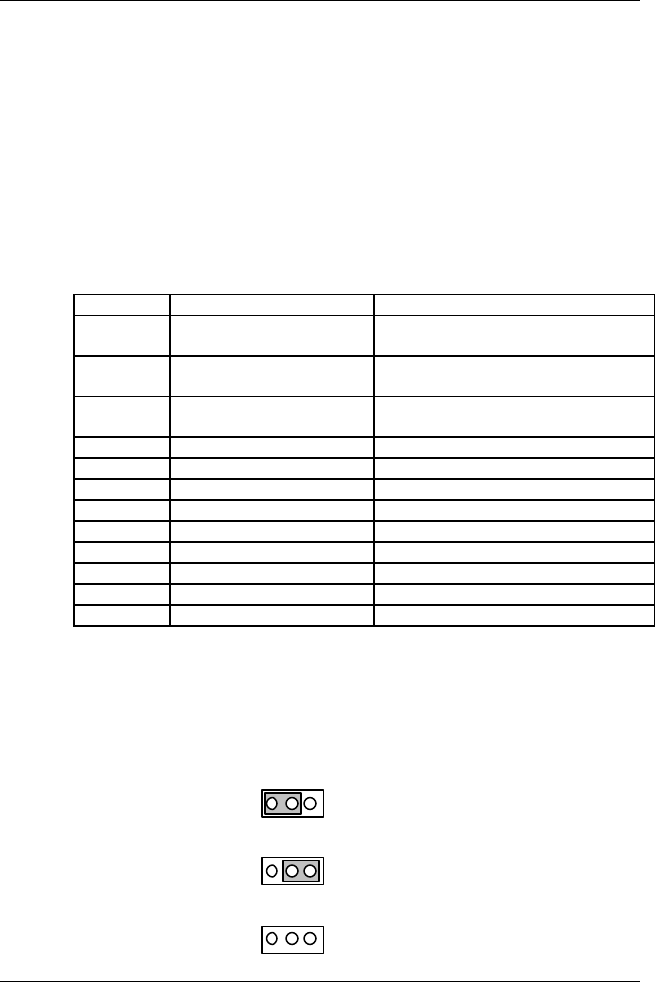
Installation
•
17
2.7 Jumpers Description
The 48H/96H DIO cards are ‘plug-and-play’, thus it is not necessary to setup
the card configurations to fit the computer system. However, to fit users’
versatile operation environment, there are still a few jumpers to set the
power-on status of ports and the usage of the +12V output pins.
2.7.1 Power on Status of Ports
For every port on the PCIDIO 48H/96H cards, the power-on status is set as input,
therefore, the voltage could be pulled high, pulled low, or floating. It is
dependent on the jumper setting. Table 2.1 lists the reference number of
the jumpers and the corresponding port names.
Jumper Port Name Remarks
JA1 P1A (Port A of CN1)
for PCIDIO 24H/48H/96H
JB1 P1B (Port B of CN1)
for PCIDIO 24H/48H/96H,
JC1 P1C (Port C of CN1)
for PCIDIO 24H/48H/96H,
JA2 P2A (Port A of CN2) for PCIDIO 48H/96H
JB2 P2B (Port B of CN2) for PCIDIO 48H/96H
JC2 P2C (Port C of CN2) for PCIDIO 48H/96H
JA3 P3A (Port A of CN3) for PCIDIO 96H
JB3 P3B (Port B of CN3) for PCIDIO 96H
J C3 P3C (Port C of CN3) for PCIDIO 96H
JA4 P4A (Port A of CN4) for PCIDIO 96H
JB4 P4B (Port B of CN4) for PCIDIO 96H
J C4 P4C (Port C of CN4) for PCIDIO 96H
Table 2.1 Jumpers and Port names list
The physical meaning of all the jumpers are identical. The power on status
of each port can be set independently. The default is to pull all signals high.
The following diagram uses JA1 as an example to show the possible
configurations.
1. Port A of CN1 are power-on pulled high. ‘H’
1 2 JA1
2. Port A of CN1 are power-on pulled low. ‘L’
1 2 JA1
3. Port A of CN1 are power-on floating. (The jumper is removed)
1 2 JA1


















